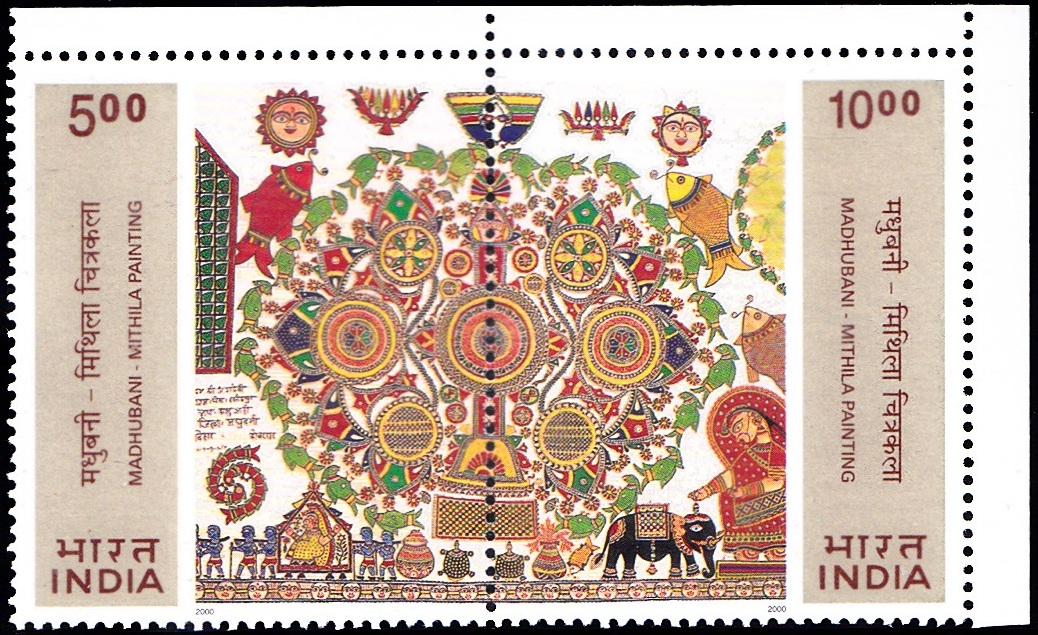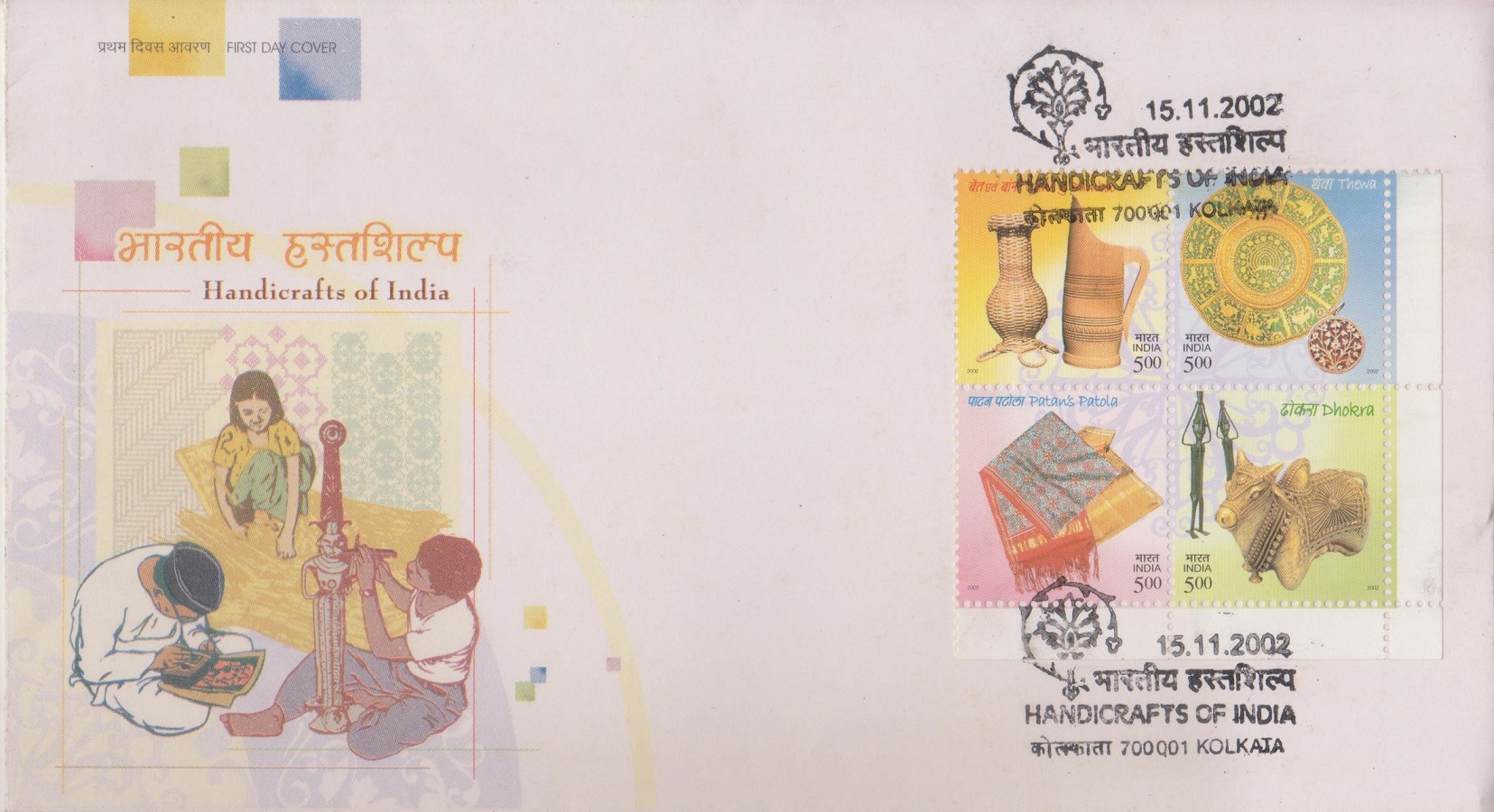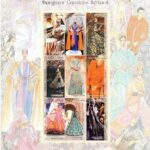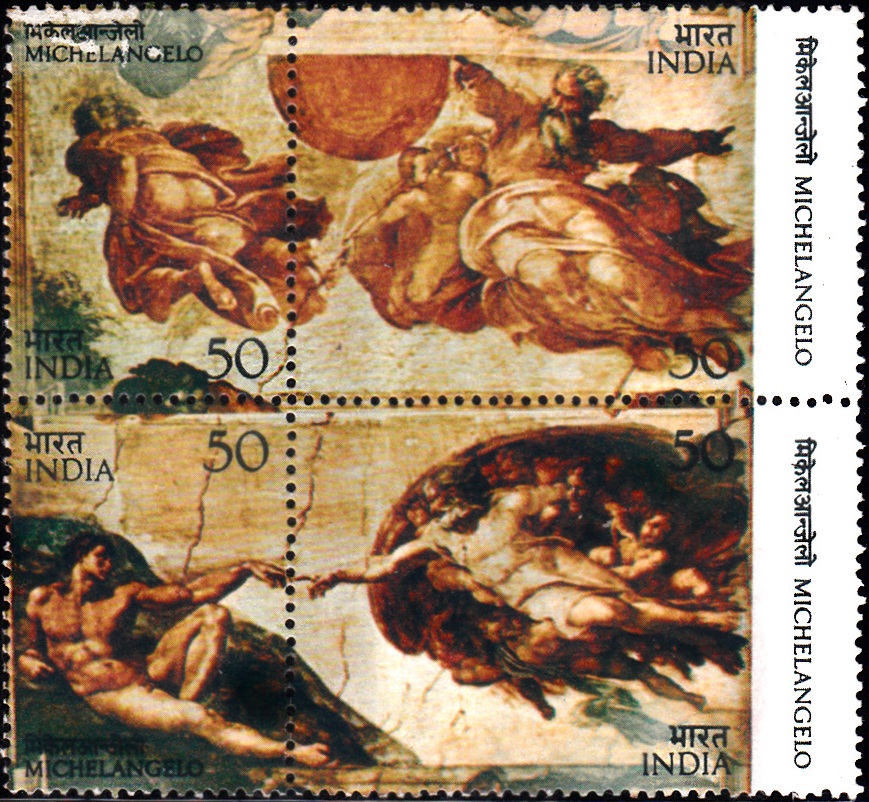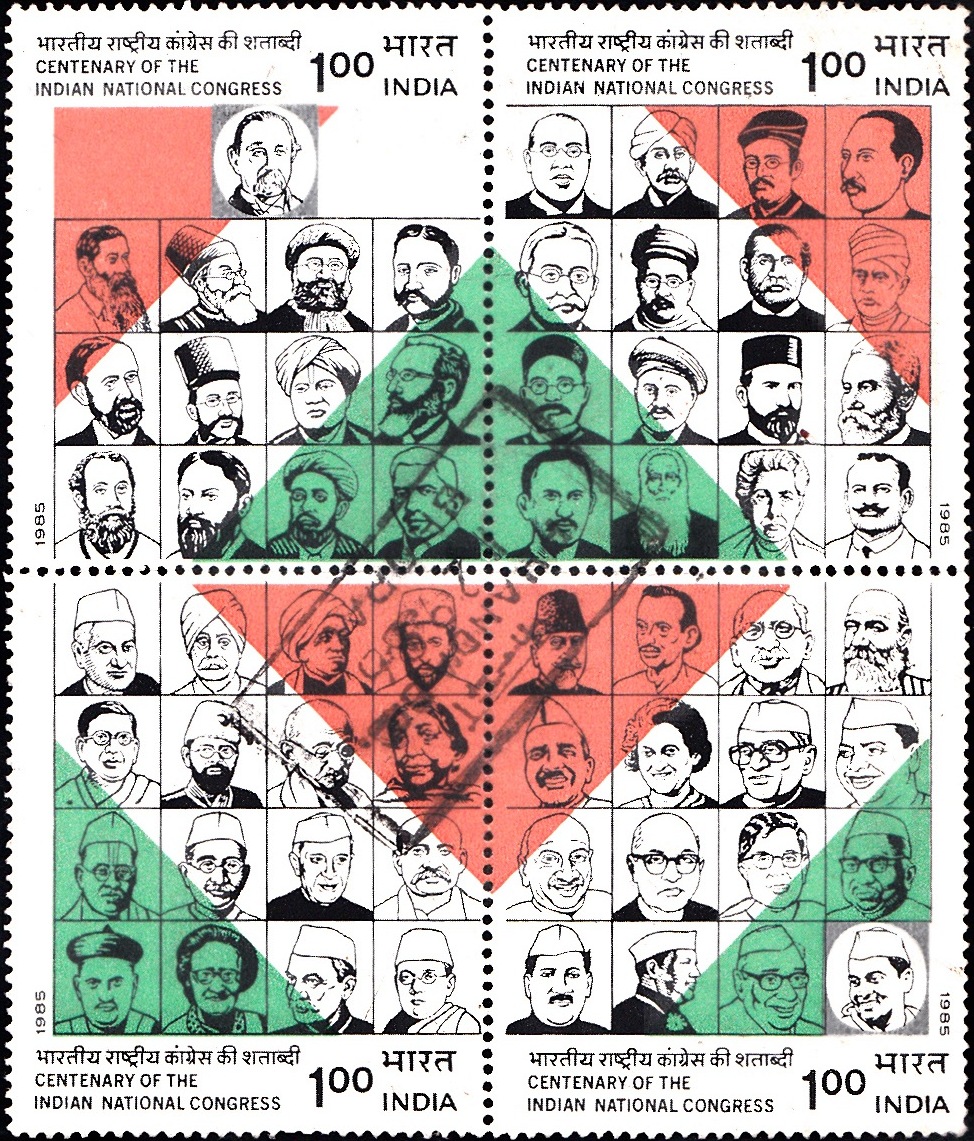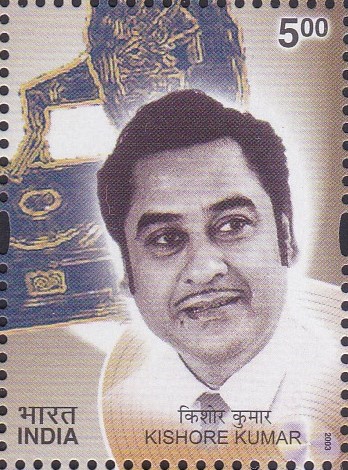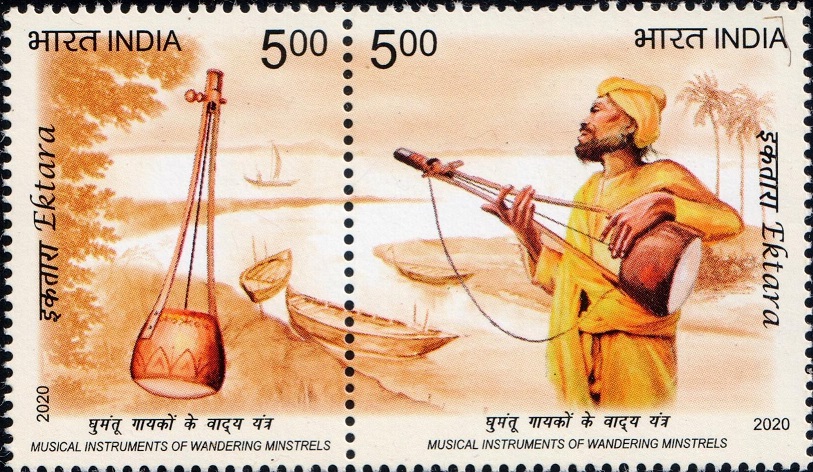
Musical Instruments of Wandering Minstrels
Complete Set of 6 pairs of se-tenant postage stamp on the Wandering Minstrels and their Musical Instruments :
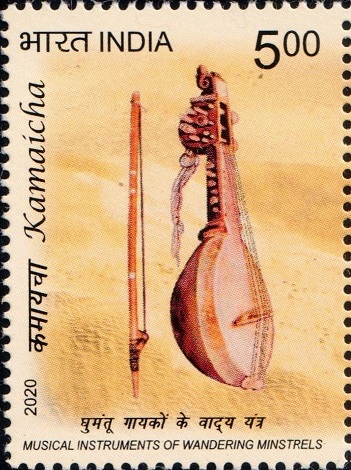
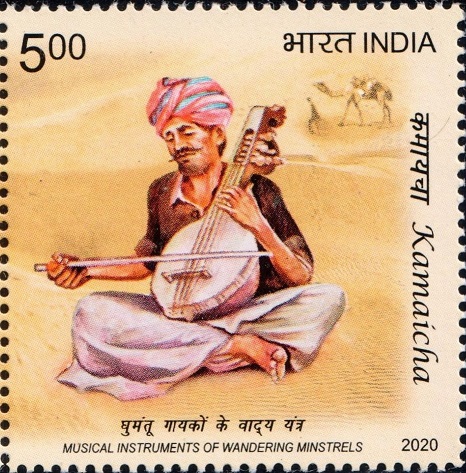
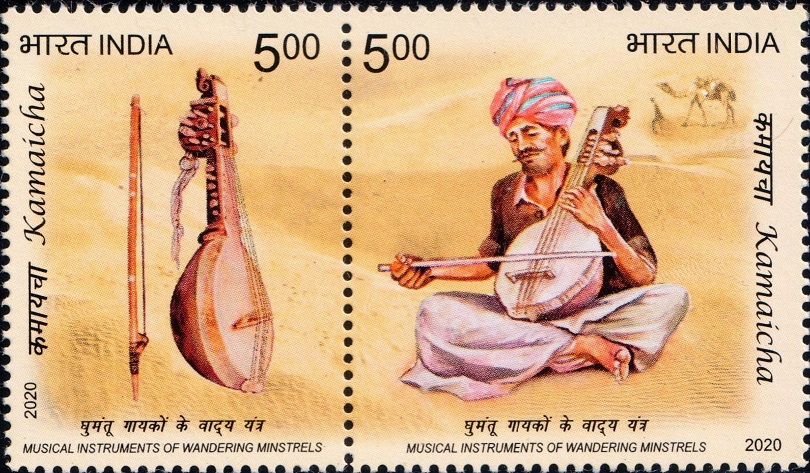
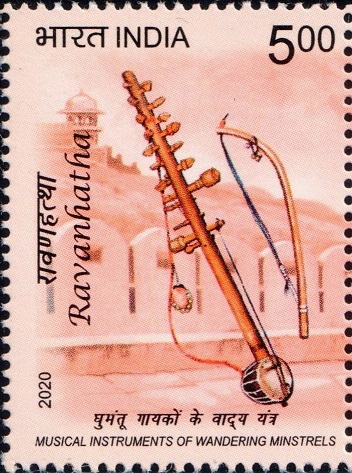
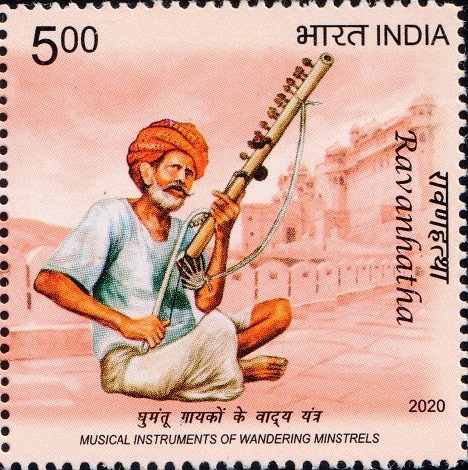
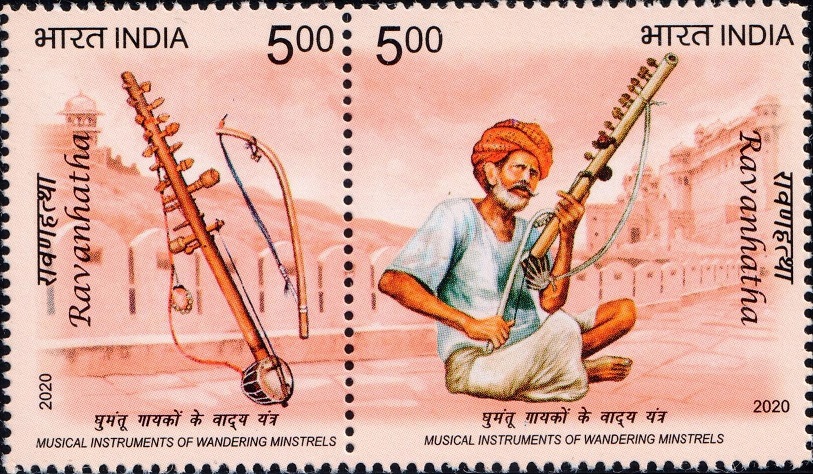
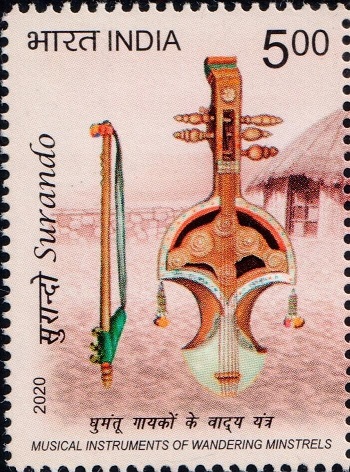
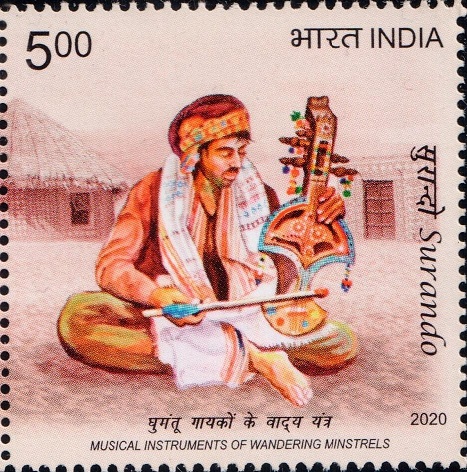
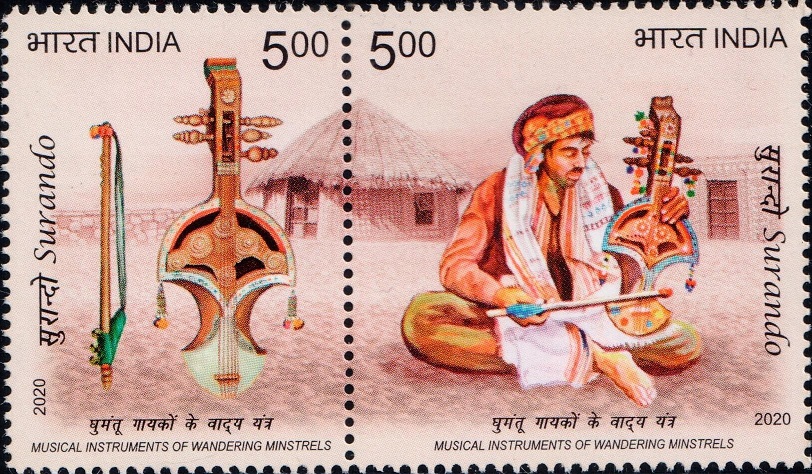
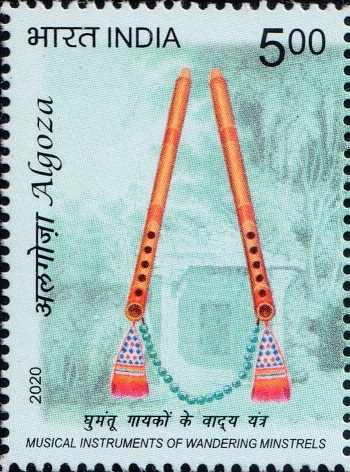
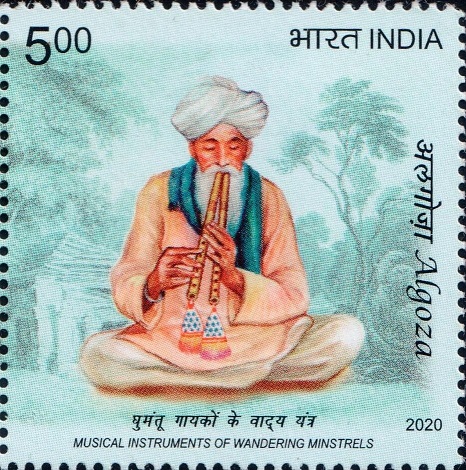
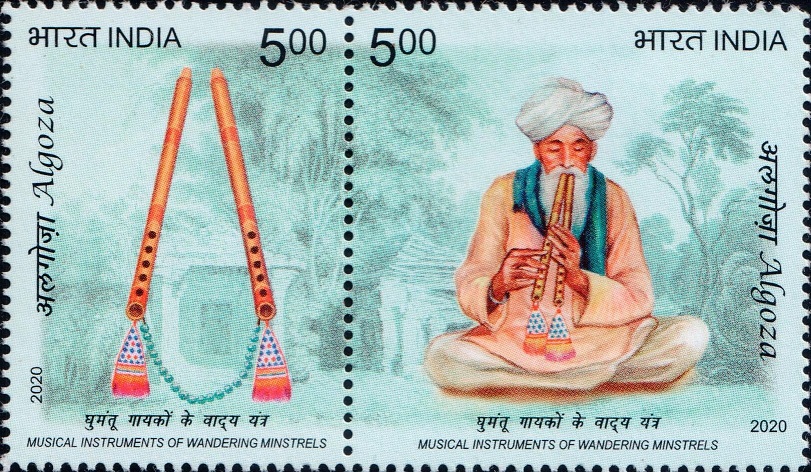
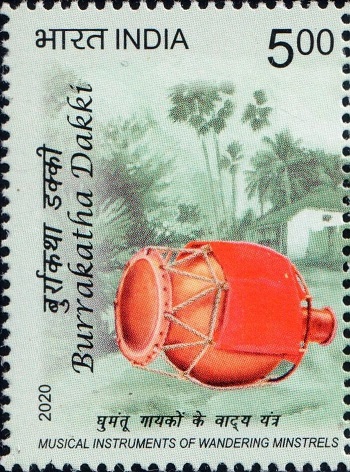
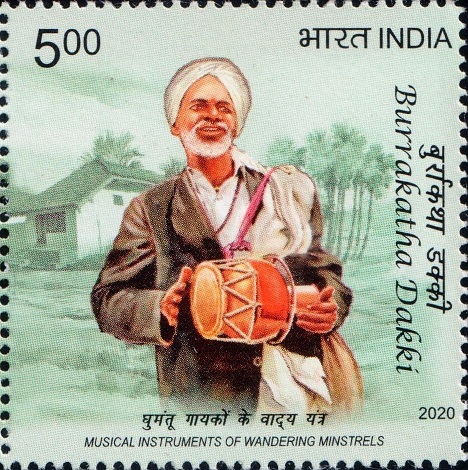
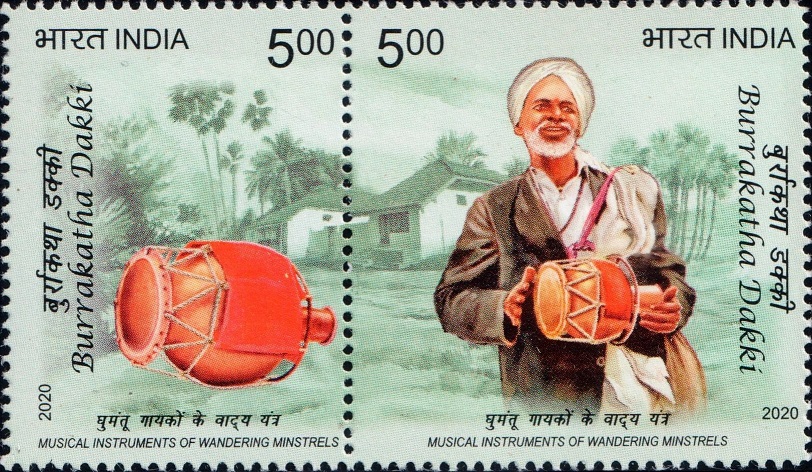
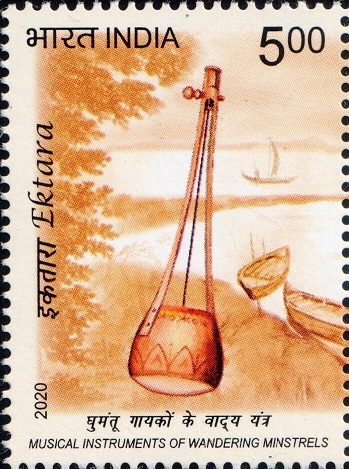
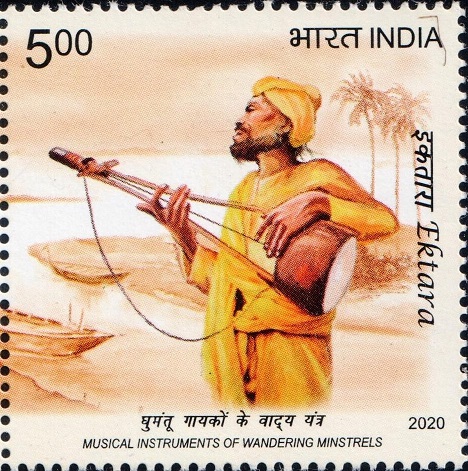
 Issued by India
Issued by India
Issued on Jun 25, 2020
Issued for : Department of Posts is pleased to issue six pairs of se-tenant Commemorative Postage Stamps on Musical Instruments of Wandering Minstrels.
Credits :
Stamps/FDC/Brochure/Cancellation Cachet : Shri Sankha Samanta
Type : Miniature Sheet, Mint Condition
Colour : Multi Colour
Denomination : 500 Paise (12)
Stamps Printed : 500000 each
Printing Process : Wet Offset
Printer : Security Printing Press, Hyderabad
About :
- India boasts of an ancient and rich musical tradition. A study of musical texts, paintings and sculptures from prehistoric times to the present day would reveal the continuity of the musical traditions of India. Musical instruments appear in the drawings and paintings (dating back to the Mesolithic era) of Bhimbetka rock shelters which is a World Heritage Site. Evidence of dance and music has been found in the excavations of the Harappan Civilization too.
- Music combines vocal or instrumental sounds for emotional expression. Musical instruments represent music in a tangible form. A study of musical instruments helps in tracing the evolution of music and also explains many aspects of the culture of the group of people using these instruments. In the Natya Shastra, compiled by Bharata Muni, musical instruments have been divided into four main categories on the basis of how sound is produced: (i) The Tata Vadya or Chordophones – Stringed instruments; (ii) The Sushira Vadya or Aerophones – Wind instruments; (iii) The Avanaddha Vadya or Membranophones – Percussion instruments; and (iv) The Ghana Vadya or Idiophones – Solid instruments which do not require tuning.
- Wandering minstrels are performers who travel from place to place performing musical acts. They have been an integral part of musical traditions of India. They composed songs to glorify their patrons and legendary heroes and inspired many dramatists of the classical Sanskrit theatre to write dramas. The charm of wandering minstrels lies in their songs and music. These wandering minstrels singing and playing on roads and streets in villages and towns at festive occasions, private as well as public, have always been a common sight in India. The soothing effect of the songs of wandering minstrels and the music mingled with their emotions and thoughts complement the force of love and goodwill directed towards the people. Beyond their functional utility, musical instruments used by wandering minstrels are aesthetically pleasing and capture the local cultural elements of various regions of India.
- Kamaicha belonging to the chordophone category is a bowed instrument with a big bowl shaped skin covered resonator, a rectangular finger board and a round peg box. Three main gut strings and eight drone steel strings are attached to a metal hook, passed over the bridge and tied to the pegs. It is played with a bow made of Shisham wood and horse hair. It is used by the Manganiar community of West Rajasthan as a popular accompaniment to their songs.
- Ravanahatha, also of the chordophone category, comprises a resonator made of coconut shell and a long bamboo finger board fixed to it. The main playing string is made of horse hair whereas another playing string and 16 sympathetic strings are made of steel. It is played with a bow made of curved wooden stick and horse hair. It is used for vocal accompaniment by Bhopas of Rajasthan in a traditional narrative from called Pabuji Ki Phad.
- Surando is an ancient folk musical instrument of the chordophone category traditionally used by the Fakirani Jat community of Kutch. It is a stringed musical instrument played with the use of a bow called Gaz or Gazi in the local dialect. The body of the instrument is preferably made of a single piece of lahirro wood to create the most precise shape and perfect melody. The bow comprises strings of horse’s hair or gut fastened to each of a flexible stick. The bow is placed on the strings at right angles to it and is moved back and forth across it.
- Algoza belonging to the aerophone category, comprises a set of two equal sized bamboo, beaked flutes with five finger holes and a fipple hole on each flute. Both the flutes are blown simultaneously by the player. It is used by the Meo community of Alwar, Rajasthan as an accompaniment to their folk and tribal songs.
- Burrakatha is an oral storytelling technique in the Jangam Katha tradition, performed in the villages of Andhra Pradesh and Telangana. Burrakatha Dakki is a pitcher shaped brass vessel with a short neck and a round belly. It belongs to the membranophone category. The wider end is covered with skin with the help of a cotton cord through hoops and an iron ring. It is suspended from the neck and played by palms by Burrakatha balladeers.
- Ektara comprises a cylindrical wooden resonator with base covered with skin, attached to a split bamboo and a single steel string plucked rhythmically by the index finger. It belongs to the chordophone category. The split bamboo is manipulated to produce variations in tone. It is a common instrument in Baul music from Bengal and used by Bauls and mendicants of Odisha and neighboring regions as a drone instrument.
- Text : Based on information available on the internet.
Subscribe
Login
0 Comments


